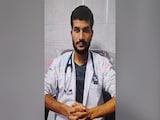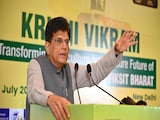Just ahead of India's 78th Independence Day, the nation has recorded its first electrosurgical valve-in-valve mitral procedure in August 2025-quite a milestone to be celebrated. A technically demanding transcatheter intervention was performed by a select team of doctors at Rajasthan Hospital, Jaipur for a 74-year-old woman with a failing mitral bioprosthesis. Heart valve disease remains a major but underdiagnosed health challenge among India's elderly population, particularly women. This breakthrough highlights the transformative potential of cutting-edge cardiac care for those with limited treatment options. The technique, informally dubbed the "Batman Procedure", used a catheter-based electrosurgical approach to treat a previously operated, high-risk patient without opening the chest, demonstrating a new option for selected inoperable cases.
What does this mean for the future of heart health and surgeries in India, especially where making these procedures as minimally invasive as possible? We spoke to Dr. Ravinder Singh Rao, Chairman, RHL Heart Centre & Head - TAVI Program, the head of the team that successfully performed the Batman Procedure, to find out more.
What Is The Batman Procedure And Why The Name?
"The Batman Procedure refers to a minimally invasive, balloon-assisted intervention for complex mitral valve issues - especially when the mitral valve's anterior leaflet is severely damaged or cannot be repaired," explains Dr Ravinder Singh Rao. He adds that "the 'Batman' name comes from the visual of the inflated balloon in the aorta, which resembles the Bat-signal and helps control the blood flow while the damaged leaflet is treated." These electrosurgical techniques often use specialized electrified wires and laceration tools to modify native tissue or prior devices so a new valve can be implanted through a catheter route - in short, a hybrid of transcatheter valve-in-valve (ViV) ideas and targeted electrosurgery.
Why This Is A Rare And Technically Complex Procedure
Transcatheter mitral interventions remain among the most complex procedures in structural heart disease. As Dr Rao put it, the procedure is "exceptionally rare and technically demanding. It's only considered when traditional open-heart surgery is too risky or not feasible." The anatomy of the mitral valve, prior surgical repairs or replacements, and the risk of obstructing blood flow to the left ventricle make planning and execution exacting - requiring high-resolution imaging, experienced operators, and a coordinated heart health team. Electrosurgical modifications (for example, lacerating a tethered leaflet or cutting failed clips) have only recently moved from case reports and small series into selected clinical practice.
The Jaipur Case: Batman Procedure To The Rescue
According to the hospital summary, the 74-year-old patient had previously undergone dual valve replacement and then developed failure of the mitral bioprosthesis. Because her age and comorbid state made repeat open-heart surgery prohibitively risky, the team performed an electrosurgical valve-in-valve mitral implantation using a catheter-based approach. The patient walked within days and returned home soon after - an outcome that highlights the speed of recovery after percutaneous approaches compared with conventional redo sternotomy.
"This case proves that even elderly, high-risk patients can receive transformative treatment with the right tools and expertise," Dr Rao said in a statement that underscores both the life-changing potential and the narrow indications for the technique.
What Patients And Families Should Know
The Batman Procedure is not a first-line therapy. It's reserved for highly selected patients, typically adults with prior valve surgery, failed repairs, or anatomy that makes repeat open surgery too dangerous. "It needs advanced infrastructure (sophisticated cath labs, specialized tools) and an expert team experienced in complex cardiac procedures," Dr Rao cautions, noting that "only a handful of Indian hospitals currently have these resources and capabilities." Post-procedure recovery is usually faster than open surgery, but requires close follow-up and lifelong cardiac care.
Why This Matters For India's Heart-Care Landscape
Valvular heart disease (VHD) remains common in India, driven by both rheumatic and degenerative causes. A recent review highlights persistent burdens of VHD across Asia and India, with mitral involvement frequently associated with pulmonary hypertension and heart failure. Broadly, cardiovascular diseases are the leading cause of death globally and account for a large and growing share of non-communicable disease mortality in India. Estimates place the pooled prevalence of cardiovascular disease among Indian adults at about 11%, and national data show that CVD causes a substantial share of deaths in middle and older age groups. These trends make accessible, advanced valve therapies an important public-health priority - not to replace prevention, but as a necessary option for those who need it. (PMC, World Health Organization)
Limitations And The Road Ahead
Will the Batman Procedure become routine? "It will likely remain a rare, last-resort option for select cases," Dr Rao says. That's realistic: barriers include high device and procedural costs, the need for operator training, and availability of round-the-clock multidisciplinary teams. Evidence remains limited to case series and registry data for many electrosurgical mitral techniques, so broader adoption will depend on careful outcome reporting and training programs. Meanwhile, expanding basic valve-disease detection, timely referrals, and equitable access to advanced cardiac centres must proceed in parallel.
Disclaimer: This content including advice provides generic information only. It is in no way a substitute for a qualified medical opinion. Always consult a specialist or your own doctor for more information. NDTV does not claim responsibility for this information.















